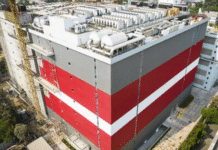New Delhi– Days after the setback at the Nuclear Suppliers Group due to China’s opposition, India on Monday became the 35th member of a global anti-proliferation bloc, the Missile Technology Control Regime (MTCR). This will not only ensure access to high-end missile technology but also enable the country to sell indigenous BrahMos missiles internationally.
“The MTCR…is pleased to announce that India now formally is the 35th member of the regime,” a statement from the grouping said after a “consensus decision by all members”.
The grouping said India’s membership would “strengthen the international efforts to prevent proliferation of delivery systems of ballistic missiles or unmanned aircraft capable of delivering weapons of mass destruction”.
The MTCR membership is seen as a step forward in India’s recognition as a legitimate nuclear power after it conducted atomic tests in 1998.
India had applied in 2008 for the membership of the elite club of countries set up in 1987 that controls exports in missile technology and unmanned delivery systems of atomic or other weapons of mass destruction.
The club places restrictions on its members exporting missile and missile-related technology, particularly on those capable of carrying a payload of at least 500 kg to a distance of at least 300 km. These include both cruise missiles and larger drones.
India’s long wait to join the MTCR actually ended in Washington D.C. earlier in June during Prime Minister Narendra Modi’s US trip when a deadline for members of the grouping to object to India’s admission expired on June 6.
None of the group’s 34 members raised any objections, paving the way for India’s smooth entry into the bloc of which China is still not a member.
China along with other nations like South Africa, Norway, Brazil, Austria, New Zealand, Ireland and Turkey last week blocked India’s entry into the Nuclear Suppliers Group (NSG) — one of the four multilateral export control regimes.
Since India’s civil nuclear deal with the US, New Delhi has been wanting to join all of the regimes, including the Australia Group and Wassenaar Arrangement since 2008 as part of the India-US civil nuclear cooperation agreement.
The MTCR membership gives India access to restricted high-end technologies for developing its cryogenic rocket engines in order to further its space exploration.
India will now also be able to acquire from the US armed Predator drones — America’s hot favourite in its war on terror in Afghanistan and Pakistan.
India can now also explore the sale of BrahMos supersonic cruise missile, jointly developed by the Defence Research and Development Organisation (DRDO) and Russia.
Both countries have been hoping to sell the missile to third countries which would now be possible after India’s MTCR membership, making it a significant arms exporter for the first time. India is already in talks with Vietnam to sell BrahMos with a flight range of 290-300km and payload of 200-300 kg.
 The Federation of Indian Chambers of Commerce and Industry welcomed the development that will “facilitate access to niche technologies to (the country’s) industry in sensitive sectors like defence, aerospace and nuclear”.
The Federation of Indian Chambers of Commerce and Industry welcomed the development that will “facilitate access to niche technologies to (the country’s) industry in sensitive sectors like defence, aerospace and nuclear”.
“This inclusion also augurs well with India’s position as an important player in the world order and fitting an emerging economic superpower,” Ficci Secretary General Didar Singh said.
“As Indian industry, we have opportunity to rise to the occasion and put in place checks and balances compliant with the obligations that this regime entails.”
Italy in 2015 had blocked India’s entry over the issue of two Italian marines accused of killing two Indian fishermen in 2012 off the Kerala coast. The Supreme Court of India recently allowed the second marine, Salvatore Girone, also to return home in Rome on May 29, pending trial against them.
“India would like to thank each of the 34 MTCR Partners for their support for the membership,” Ministry of External Affairs (MEA) spokesman Vikas Swarup said.







